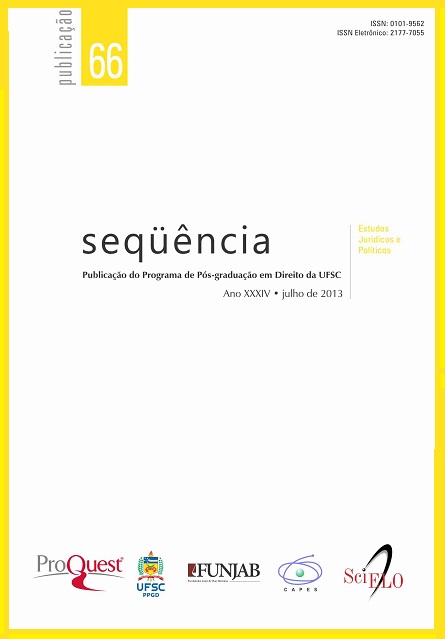Content and Legal-political Significance of “Introduction” of the German Civil Code in Context of Legislative Consolidation in Early Nineteenth Century
DOI:
https://doi.org/10.5007/2177-7055.2013v34n66p47Abstract
If one looks at the beginning of the Austrian ABGB, one finds a so-called “Einleitung”, ie. introduction, first. Those introductions are the expression of a conflict about judicial policy starting to gain momentum in the second half of the 18th century and dominating relations between the monarchic legislator and the judiciary until the second half of the 19th century. Beneath the change towards a codified law since the late 18th century is the demand of the state to from now on create the law on its own. The judiciary was allocated the mere role of a purely norm-applying instance. In this article, it is shown which conflicts between politics and judiciary resulted from this view and how the state tried to discipline the judiciary.Published
2013-07-22
How to Cite
SIMON, Thomas. Content and Legal-political Significance of “Introduction” of the German Civil Code in Context of Legislative Consolidation in Early Nineteenth Century. Seqüência - Legal and Political Studies, Florianópolis, v. 34, n. 66, p. 47–82, 2013. DOI: 10.5007/2177-7055.2013v34n66p47. Disponível em: https://periodicos.ufsc.br/index.php/sequencia/article/view/2177-7055.2013v34n66p47. Acesso em: 10 dec. 2025.
Issue
Section
Artigos
License

This work is licensed under a Creative Commons Attribution-NonCommercial-NoDerivs 3.0 Unported License.























